𝔖𝔦𝔤𝔥𝔰 𝔞𝔫𝔡 𝔏𝔢𝔢𝔯𝔰 𝔞𝔫𝔡 ℭ𝔯𝔬𝔠𝔬𝔡𝔦𝔩𝔢 𝔗𝔢𝔞𝔯𝔰
by Sula Bermùdez-Silverman
PRESS RELEASE
FOR IMMEDIATE RELEASE
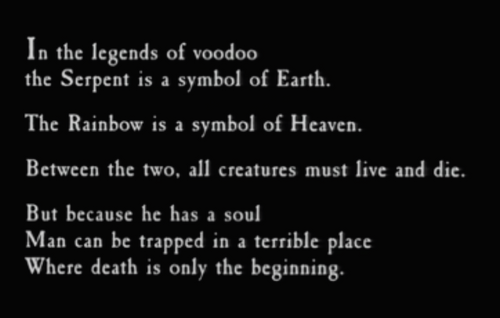
Still from the opening of The Serpent and the Rainbow, 1988 by Wes Craven
FOR IMMEDIATE RELEASE

Still from the opening of The Serpent and the Rainbow, 1988 by Wes Craven
The word monster is derived from the Latin verb moneo which means “to warn” or “to advise.” In the rawest sense, monsters are prescient figures that reveal the forms of our fears even before we are conscious of them. 𝔖𝔦𝔤𝔥𝔰 𝔞𝔫𝔡 𝔏𝔢𝔢𝔯𝔰 𝔞𝔫𝔡 ℭ𝔯𝔬𝔠𝔬𝔡𝔦𝔩𝔢 𝔗𝔢𝔞𝔯𝔰, a solo exhibition by Sula Bermúdez-Silverman explores the expansive use of monsters ––in particular zombies–– and haunted spaces in the horror genre as metaphors for the actions societal systems inflict upon groups of people on a spiritual and physical level. This is the artist’s first exhibition at Murmurs. The quotidian yet uncanny sculptures and installations layered with images from horror films trace the presence of monsters on both sides of the complicated, often fraught relationship between history and lived experience. Disjointed objects ––a dollhouse, a kitschy shelf, a reptilian hand–– are rendered as crystalline specters of their past selves, illuminated from below with light.
All the sculptures are made from only three substances: sugar, salt, and glass— all historically rarefied products of colonialism whose translucency mimics the invisible machinations of the market systems that prop up commodities. A question at the heart of this exhibition asks: as history is written, what is visible and to whom? As Toni Morrison put it, “invisible things are not necessarily ‘not-there.’”1 Often what is seen is only part of the story. This is true of the cinematic monsters that loom large amongst the ghostly sculptures, highlighting the dissonance between, on one side, horror: a genre of contrived narratives and mass-produced representations and, on the other side: terror, the visceral experience of living within capitalism’s monstrosities.
1. Toni Morrison, “Unspeakable Things Unspoken: The Afro-American Presence in American Literature,” (The Tanner Lectures On Human Values, University of Michigan, October 7, 1988)
1. Toni Morrison, “Unspeakable Things Unspoken: The Afro-American Presence in American Literature,” (The Tanner Lectures On Human Values, University of Michigan, October 7, 1988)


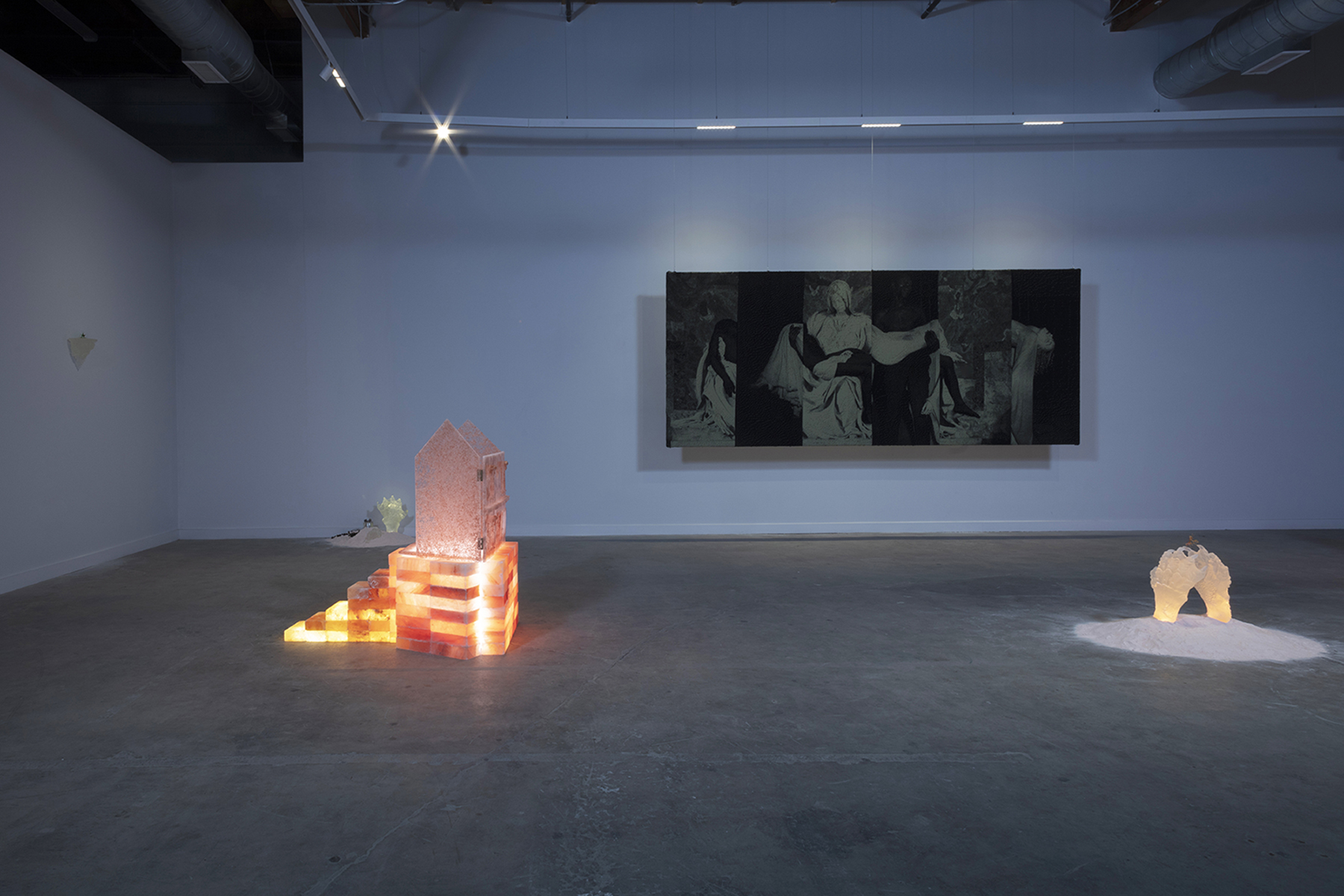
The title “Sighs and Leers and Crocodile Tears” is taken from the nursery rhyme with the quintessential phrase “Sugar and spice and everything nice. That’s what little girls are made of.” The poem continues, “Sighs and leers and crocodile tears. That’s what young men are made of,” a line which reads as a veiled warning about the monstrous nature of masculinity. Like young men in the nursery rhyme, there are many monstrous structures in modernity that have been normalized and integrated into ordinary life.
Bermúdez-Silverman is interested in zombies in particular as they are monsters born of colonialism and bred in capitalism. The predecessor of the modern zombie is the Haitian-Vodou zombi, which dates back to the 17th century when slaves were brought en masse from West Africa to French-occupied Haiti to work the sugar plantations. In Vodou tradition, a zombi is a dead body that has been partially brought back to life, often by a bokor (Vodou priest), using sorcery, to serve as an indentured servant. The bokor uses a combination of magic and poison to cleave a victim’s soul from their body, reanimating the body to labor as a slave until it is either released or receives an antidote. The zombi potion is purported to be made from, among other things, charred, ground human bones, Datura flowers, and pufferfish or frog venom, which contains a neurotoxin that causes the victim to slip into a limbo state between life and death where free will is replaced by complete obedience.
![]()
Still from I Walked with a Zombie
Bermúdez-Silverman is interested in zombies in particular as they are monsters born of colonialism and bred in capitalism. The predecessor of the modern zombie is the Haitian-Vodou zombi, which dates back to the 17th century when slaves were brought en masse from West Africa to French-occupied Haiti to work the sugar plantations. In Vodou tradition, a zombi is a dead body that has been partially brought back to life, often by a bokor (Vodou priest), using sorcery, to serve as an indentured servant. The bokor uses a combination of magic and poison to cleave a victim’s soul from their body, reanimating the body to labor as a slave until it is either released or receives an antidote. The zombi potion is purported to be made from, among other things, charred, ground human bones, Datura flowers, and pufferfish or frog venom, which contains a neurotoxin that causes the victim to slip into a limbo state between life and death where free will is replaced by complete obedience.
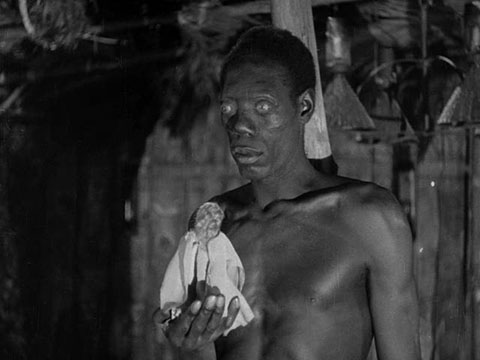
Still from I Walked with a Zombie
A bokor can also create an incorporeal version of a zombi, called a zombi astral by capturing a victim’s soul and sealing it into a specially decorated glass bottle. Zombi astrals are sold by bokors as talismans to increase spiritual power.
Long after slavery ended in Haiti, the fear of losing personal liberty and physical autonomy via zombification was preserved in folklore as one of the permanent scars left by colonization. To this day zombis are a common phenomenon in Haiti, becoming such a widespread problem that an “anti-zombi” law was added to the Haitian Criminal Code banning the use of specific poisons that, without causing death, induce a prolonged state of lethargy.
![]()
Long after slavery ended in Haiti, the fear of losing personal liberty and physical autonomy via zombification was preserved in folklore as one of the permanent scars left by colonization. To this day zombis are a common phenomenon in Haiti, becoming such a widespread problem that an “anti-zombi” law was added to the Haitian Criminal Code banning the use of specific poisons that, without causing death, induce a prolonged state of lethargy.
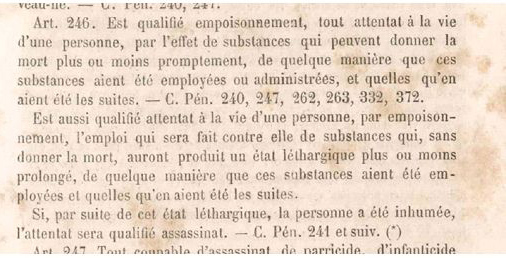
Haitian Criminal Code, 1883

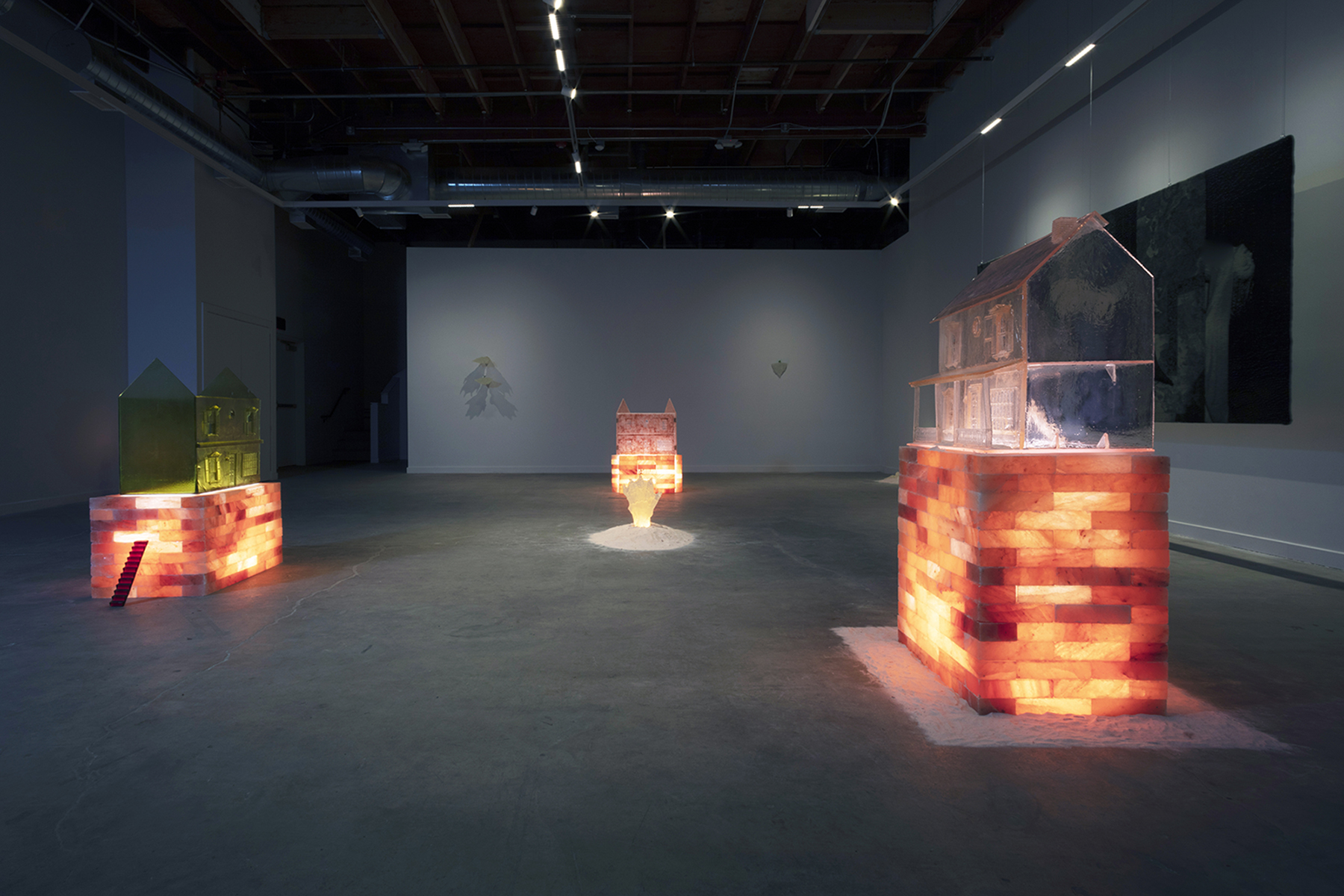

Installation Views
America’s infatuation with zombies began in the 1930’s during the US occupation of Haiti. At the time the burgeoning genre of horror film was experiencing a “golden age” with on-screen monsters such as Dracula, Frankenstein, the Mummy, and Wolf Man. Early films depicted white people as interlopers in the Caribbean zombi legend, victims who often fell into a trap set by a malevolent bokor figure. This narrative, which stoked American fears of voodooism and Blackness, was used for decades until George Romero drastically revised the zombie archetype in Night of the Living Dead (1968).
![]()

Still from Night of the Living Dead
Romero disconnected zombies from their origin by portraying them not as individual incarnations of a sorcerer but rather as hordes of undead bodies, giving them a relentless hunger for human flesh, and introducing the iconic staggering, raised-arm “zombie walk.” In Romero’s Dawn of the Dead (1978), an epidemic turns healthy people into zombies who then infest more living victims, spreading the disease through biting. Much of the film takes place in a shopping mall, drawing a connection between zombies and consumerism to make a simple point: the insatiable need to purchase and own are so deeply ingrained in 20th century Americans that their reanimated corpses are relentlessly driven by the same instincts to consume -- they were zombies even in life. There exists a bitter irony between Romero’s “American” zombie and its Haitian counterpart: the zombi-laborer is repositioned as the zombie-consumer, thus offering criticism of the hyper-consumptionist ethos of an American capitalism characterized by excess, yet completely ignoring the hidden world of labor and the disparities of class that make all this consumption possible.
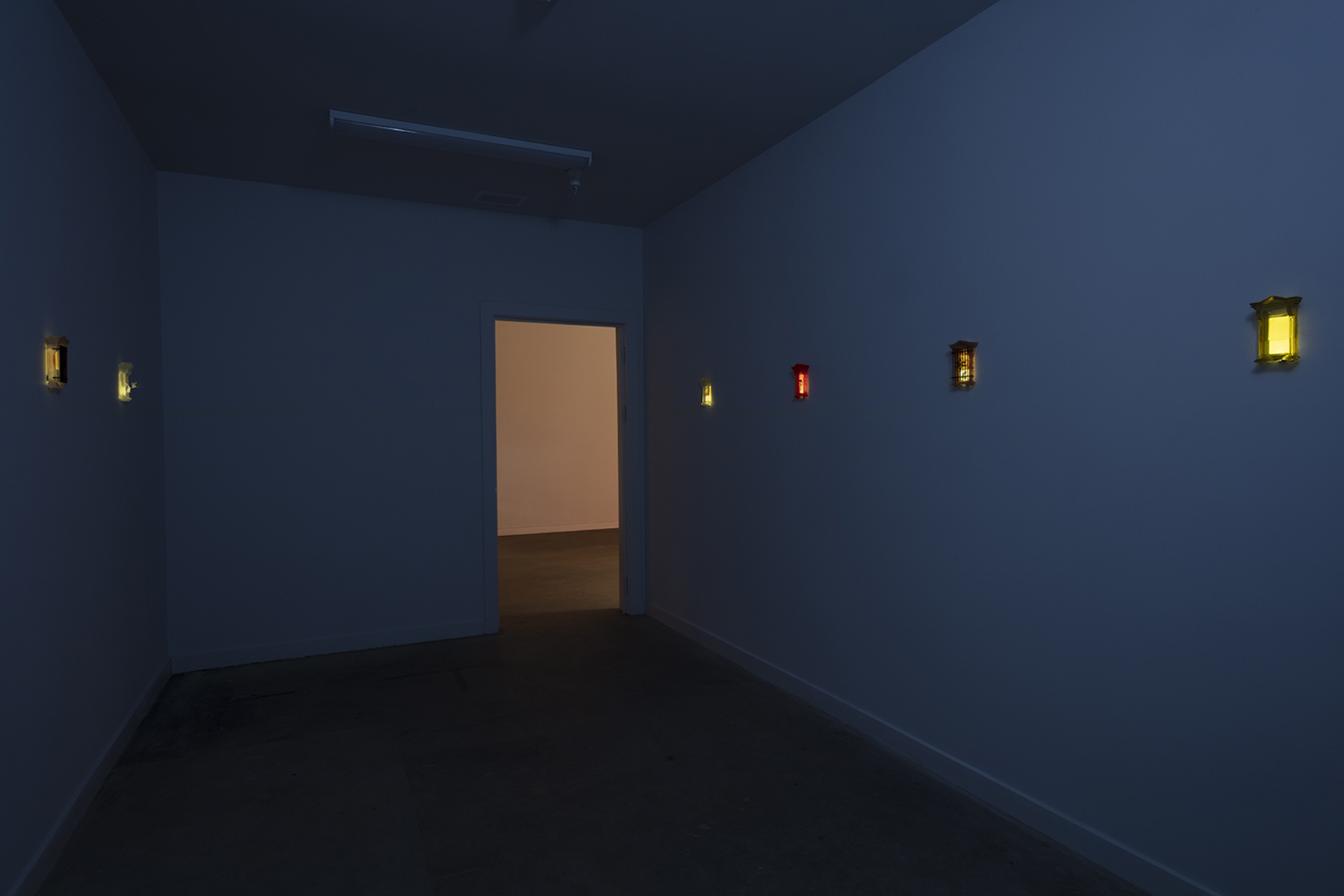
Installation Views | Photo Credit: Joshua Schaedel
In Lady with the Ring, Turning Heel, Satan Arousing the Rebel Angels, and If a Serpent Did Not Eat Another, it Would Never Become a Real Dragon, disembodied reptilian hands of the aquatic monster from The Creature from the Black Lagoon (1954) grope the air, bringing to mind the outstretched arms of Romero’s zombies as they search for living flesh to consume. The modern zombie’s cannibalistic tendencies shifted the fear from becoming a zombie to being eaten by one. In horror cinema, that fear is complicated by a desire for, even attraction to, the monster. This duality is evidenced in the iconic tableau recreated on thousands of monster movie posters of an alarmed or unconscious scantily-clad white woman in the arms of a monster. The six-panel tapestry Carrefour Pietà/Be My Victim features a version of this trope from the 1943 film I Walked with a Zombie spliced with Michelangelo’s Pietà shown with a Black Jesus. Something about a beast having total control over an utterly vulnerable white femme titillated audiences with equal parts attraction and repulsion. It sparked the fear, and also fantasy of, miscegenation implicit in the intimate gesture as it left the viewer to imagine what happened next between the monster and his girl.

Still from I Walked with a Zombie
With millions of tiny bubbles and minute fractures sparkling in the light under the slightly cloudy surface, Bermúdez-Silverman’s sugar sculptures emanate preciosity and fragility. Sugar was the engine of the colonial Caribbean economy, so precious that sculptures made from it were used as displays of power by kings and nobility. Repository I: Mother references the exclusivity of sugar in relation to the private architecture of a home. Historically, whiteness and property share a common premise-- a right to exclude. Repository II: Dead Ringer is made from glass, the material of the zombi astral container. Ground up glass was also used in the zombi potion to expedite death as it would abrade the skin of the victim, allowing the poison to enter the bloodstream. Repository III: Resurrector is made from salt, the only antidote to the zombi poison. In folkloric and superstitious traditions, the devil is believed to detest salt, thus a ring around a home like the one around the base of Repository I is imbued with protective power against evil spirits.
Similarly, the windows of the house are boarded up to keep malevolent forces out of the sacred space inside. The windows from the houses reappear in the Porthole series, where they glow from within to reveal objects or celluloid images embedded in their panes. In the darkened room, the Portholes present as openings, allowing the viewer to peer into various eerie scenes-- cannibal Mary of Bethezuba spit-roasting her own child, the axe used by Julian Carlton to murder seven people at his employer Frank Lloyd Wright’s estate, Michael Jackson’s zombified face from Thriller, and more. As the pun in the title of the series suggests, they are portals, straddling the liminal space where the monsters are both inside and outside, real and imagined.
![]()
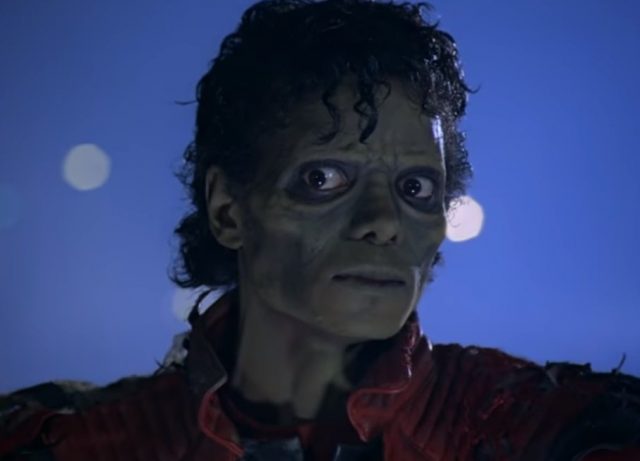
Still from Michael Jackson’s Thriller

